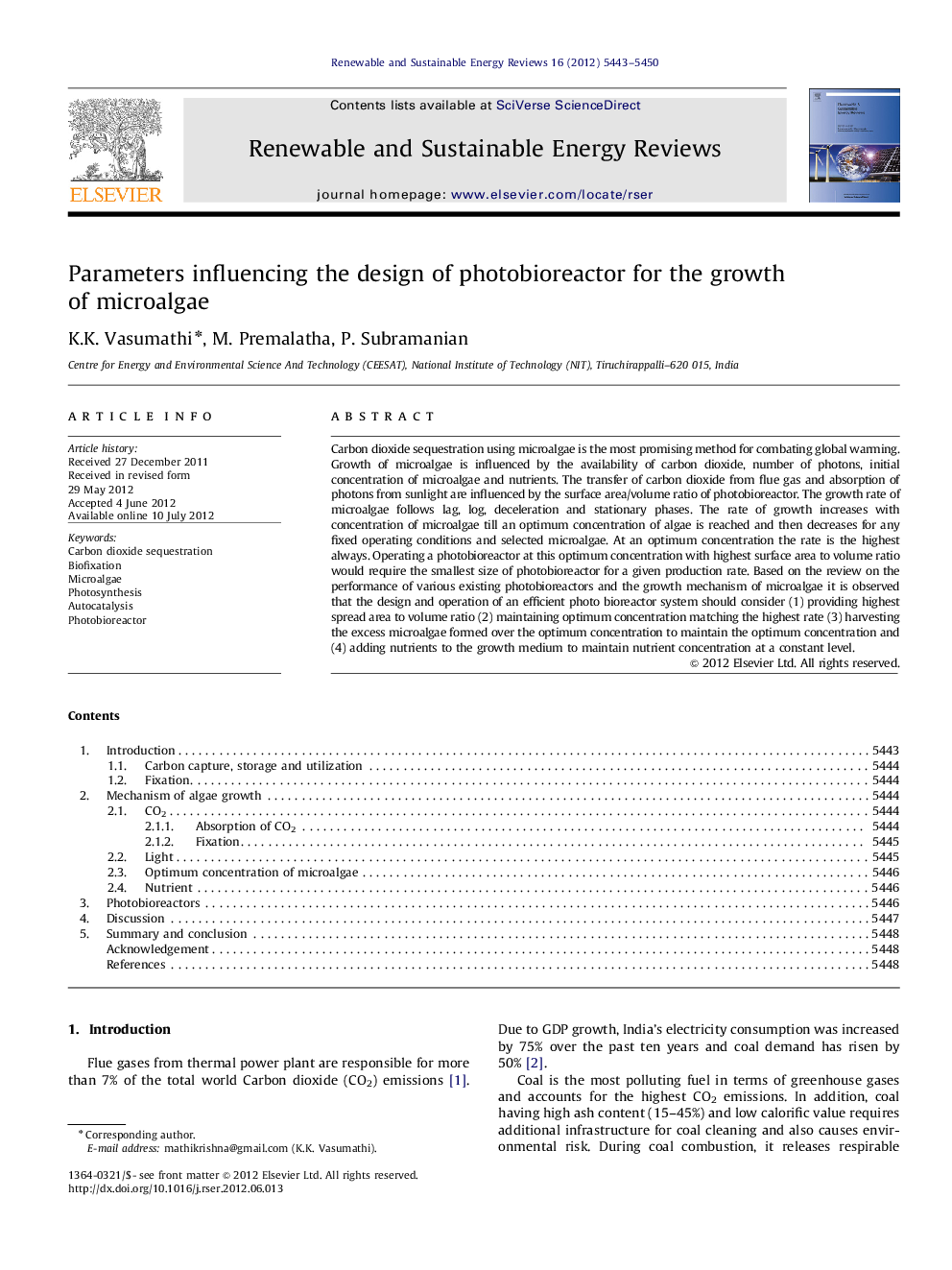| Article ID | Journal | Published Year | Pages | File Type |
|---|---|---|---|---|
| 1750971 | Renewable and Sustainable Energy Reviews | 2012 | 8 Pages |
Carbon dioxide sequestration using microalgae is the most promising method for combating global warming. Growth of microalgae is influenced by the availability of carbon dioxide, number of photons, initial concentration of microalgae and nutrients. The transfer of carbon dioxide from flue gas and absorption of photons from sunlight are influenced by the surface area/volume ratio of photobioreactor. The growth rate of microalgae follows lag, log, deceleration and stationary phases. The rate of growth increases with concentration of microalgae till an optimum concentration of algae is reached and then decreases for any fixed operating conditions and selected microalgae. At an optimum concentration the rate is the highest always. Operating a photobioreactor at this optimum concentration with highest surface area to volume ratio would require the smallest size of photobioreactor for a given production rate. Based on the review on the performance of various existing photobioreactors and the growth mechanism of microalgae it is observed that the design and operation of an efficient photo bioreactor system should consider (1) providing highest spread area to volume ratio (2) maintaining optimum concentration matching the highest rate (3) harvesting the excess microalgae formed over the optimum concentration to maintain the optimum concentration and (4) adding nutrients to the growth medium to maintain nutrient concentration at a constant level.
